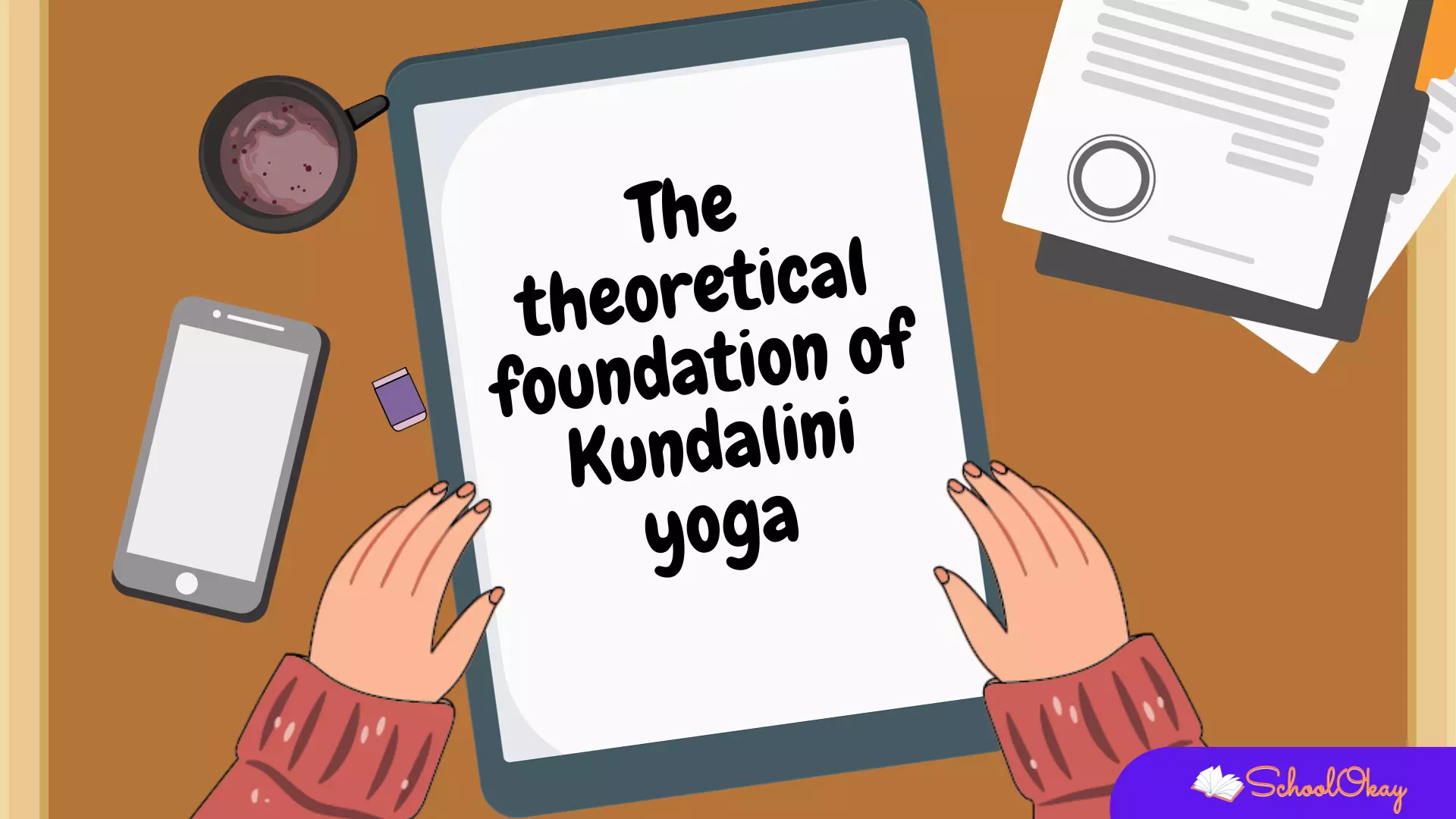Kundalini Yoga: Dangerous yet the most potent all you need to know
In yogic culture, the snake, or the unmanifest energy within a person, is symbolized by Kundalini. When Kundalini is still, you aren't even.

The asanas (poses) are given a lot of attention in the yoga practised in the West, but they make up only a small portion of yoga. A significant spiritual element emphasizes breathing, meditation, and the rules for performing yoga correctly. In this article, we have talked about Kundalini yoga and some of the basic knowledge that will help you in the long run.
In all of this, there is a unique type of yoga called Kundalini yoga, which emphasizes the spiritual side of yoga more than the physical poses. Understanding and experiencing Kundalini yoga firsthand is the best way to do so.
However, it's important to understand what you're getting into and why Kundalini yoga is regarded as one of the riskiest yoga techniques before you try practising it.
Kundalini Yoga: What is it?

In a class setting, Kundalini yoga is promoted in a variety of ways that result in an increase in life force and a pervasive Kundalini spirit.
In yogic culture, the snake, or the unmanifest energy within a person, is symbolized by Kundalini. When Kundalini is still, you aren't even aware that it exists; however, when it moves, you will become aware of your own power. This Kundalini is known as a "snake" because it can be difficult to spot a snake when it is curled up or in the kundalini position until it moves.
You will be able to experience miraculous things within yourself that you won't believe even exist if the Kundalini energy ever rises within you. You will release an entirely new level of energy, allowing your body to behave entirely differently.
What distinguishes Kundalini yoga from other forms of yoga?

While you can find many yoga poses in Kundalini yoga classes, they tend to be seated poses that emphasize repetitive motions and spinal exercises. Like no other yoga style, it also places a greater emphasis on energizing and esoteric elements. This style of yoga places a greater emphasis on visualization, mantra, pranayama, and meditation than it does on any of hatha yoga's physical practices.
When you walk into a Kundalini yoga class, you'll notice that the practitioners are dressed in white and may even be using sheepskins in place of or on top of yoga mats. They think that wearing it will enlarge their aura and enable them to spread more uplifting energy throughout the cosmos. White turbans are also permitted for Kundalini yogis, as they aid in focusing on the third eye or sixth chakra centre.
Kundalini Yoga's Historical and Philosophical Background

In order to fully comprehend Kundalini yoga, you must obtain accurate information about it. Kundalini yoga has a philosophical and historical foundation rooted in an ancient yogic tradition.
Kundalini Yoga's origin

The Upanishads and Bhagavad Gita, where Kundalini energy is frequently pictured as a coiled serpent and is said to be located at the base of the spine, are references to the origins of Kundalini yoga. The main goal of kundalini yoga is to awaken this dormant energy.
According to popular belief, Hatha yoga, which places a strong emphasis on breathing, physical postures, and energy channelling, served as the main inspiration for Kundalini yoga. The safe evolution of Kundalini energy depends on these procedures.
The theoretical foundation of Kundalini yoga

The term "kundalini energy" refers to a feminine energy that is dormant and takes the shape of a coiling serpent. As this energy develops, it leads to a higher state of consciousness and self-realization.
The subtle energy centres in the body, known as the chakras, are recognized by kundalini yoga. The various facets of the human experience and consciousness are represented by these chakras, which are energetic wheels. These chakras must also awaken in order for the Kundalini energy to flow freely throughout the body.
In Kundalini yoga, practitioners become aware of the Nadi, a subtle energy body, and the passage of prana through it. The goal of kundalini yoga is to purify the foundation to enable effortless movement throughout the body.
The idea of the union of the male and female energies, Shiva and Shakti, is one that is embraced by kundalini yoga. The union of these polar energies that result in spiritual enlightenment is frequently symbolized by the awakening of the Kundalini energy.
The awakening of Kundalini energy

At the base of the spine, there is a dormant energy known as kundalini energy. This energy is frequently represented as a spiritual goddess or a coiling serpent. This energy is referred to in yoga as a sleeping goddess who, when awakened, has the capacity to bring about significant transformations.
Kundalini yoga involves reawakening the dormant energy from the base of the spine to the crown. The primary goal of practices that involve awakening this energy is to open the body's chakras and Nadia to allow for the free flow of energy.
Each stage of the transformational journey known as kundalini awakening has its own experiences and difficulties. Every person who awakens their Kundalini energy encounters some universal patterns and experiences.
The pre-awakening stage of Kundalini:

This is a period of restlessness during which the person longs for spiritual development and a heightened awareness of ego limitations. The person might be drawn to spiritual practice because they are looking for a deeper purpose in life.
The stage of awakening Kundalini:

The Kundalini energy awakens in the stage of awakening, where it starts to move and store. The person will go through this stage where they will feel vibrations, tingling, emotional release, or bliss.
The intensification stage Kundalini:

This stage occurs when Kundalini's energy intensifies and becomes more active. At this point, the energy can travel farther through the spine and reach higher energy centres. An intense physical, psychological, and emotional phenomenon, including increased power, heightened sensitivity, and a stronger connection to spiritual realms, may be experienced by the person at this stage.
The stage of integration Kundalini:

As the Kundalini energy rises during this stage, balancing and integration begin. People can feel more united, have expanded states of consciousness, and gain spiritual insights. This is the phase of increasing self-awareness and letting go of attachments
The final stage, transcendence, occurs when the Kundalini energy reaches the crown of the head, producing a state of self-realization or spiritual awakening. This stage is characterized by a strong sense of unity, oneness with God, and a thorough comprehension of one's true nature.
It is certain that people will face a variety of difficulties as their Kundalini energy awakens, including physical pain, emotional upheaval, and the need for energy and psychological integration. It is crucial to approach this process with tolerance, confidence in oneself, and the correct direction of the mentors or teachers.
The dizzying sensation that occurs during Kundalini awakening

As was previously mentioned, the process of kundalini awakening involves releasing the energy that has been stored at the base of the spine. Now, the Kundalini energy awakening process can be started by trauma, spiritual practices, unexpected events, and other things. Here are some examples of the physical, mental, and emotional sensations you might have when Kundalini's energy awakens.
Physical sensations: People who are experiencing Kundalini awakening may notice a variety of physical sensations, including heat, tingling, vibrations, and a variety of involuntary movements, including jerking, shaking, and twitching.
Emotional experience: Experiences with emotions like bliss, joy, ecstasy, and love can also be brought on by the awakening of the Kundalini energy. On the other hand, it may also result in unresolved emotional problems that heighten feelings of anxiety, fear, and depression.
Mental experience: Intense mental experiences, such as heightened awareness, expanded consciousness, and spiritual insights, can also be brought on by kundalini awareness. Confusion, disorientation, and even psychosis can result, though.
What dangers lurk in Kundalini yoga?

While there are undoubtedly many advantages to Kundalini yoga, it's important to keep in mind that if the Kundalini energy is not properly awakened or if it is not balanced and integrated, it can result in a variety of psychological, emotional, and physical issues.
Kundalini energy can only be awakened in a specific way. A person may experience many worse symptoms if this energy is not properly awakened. The most frequent risk associated with practising Kundalini yoga is the emergence of Kundalini syndrome, which is characterized by a number of symptoms, including headaches, nausea, fatigue, anxiety, and even psoriasis. When the Kundalini energy is not properly awakened or is awakened too quickly or forcefully, these kinds of symptoms can appear.
Due to the physical poses and movements involved in practising Kundalini yoga, there is also a risk of suffering a physical injury. Strains, sprains, and numerous other injuries can result from performing these movements incorrectly. Therefore, it's crucial to practice Kundalini yoga under the supervision of a yoga teacher who can make sure it's done correctly and safely.
As many people use spiritual practices to avoid dealing with emotional and psychological problems, Kundalini yoga practice can also involve spiritual bypassing. This can cause a number of issues, such as risks of self-awareness, emotional repression, and even spiritual arrogance among people.
What advantages does Kundalini yoga have?

Despite the additional risks, Kundalini yoga is still regarded as one of the most effective spiritual disciplines. When done correctly, it can produce profound spiritual experiences that can change a person completely. Here are some of the top advantages of Kundalini yoga:
Improved concentration and mental clarity:

Kundalini yoga not only facilitates mental clarity but also enhances concentration, and it is beneficial for yoga practice and daily life.
Deep relaxation and stress reduction:

The practice of Kundalini yoga will reduce stress and aid in finding peace by encouraging deep relaxation; this will also provide a number of physical and mental advantages.
Increased Vitality and Energy:

Kundalini Yoga uses a unique set of poses to awaken the Kundalini energy, which will further increase vitality and energy.
Increased creativity and inspiration:

Kundalini energy, when properly awakened, can increase creativity and inspiration while also bringing more meaning and purpose into a person's life.
Spiritual awareness increased:

Kundalini yoga is typically practised by people because it fosters a closer relationship with God. The practice of Kundalini yoga also results in higher states of spiritual awareness.
How to perform Kundalini yoga properly?

Practice under supervision:

Whenever you continue to practice Kundalini yoga, make sure you do so with the assistance of a qualified instructor who can teach you about the poses and who can assist you in performing the movements safely and correctly.
Start out cautiously:

As it can be problematic to start out by giving your body too much energy at once, be careful while practising. Make sure to practice Kundalini yoga slowly and with the right instruction if you are a beginner.
Always pay attention to your body :

Avoid overdoing your yoga practice to the point of injury. Always pay attention to your body, and once you experience any pain or discomfort, stop practising yoga.
Prioritize your physical and mental health:

Kundalini yoga is undoubtedly a practice that can aid in your personal development, but it's crucial that you look after both of these aspects of your health. You may need the assistance of a licensed trainer or healthcare professional to take care of your physical health.
Last words
The profound spiritual practice of kundalini yoga can result in spiritual awakening and transformation. But you must go into this process with great caution and under the direction of a knowledgeable and spiritual teacher.
Kundalini syndrome, spiritual bypassing, physical injury, and other things are among the dangers of Kundalini yoga.
Many people are eager to learn this yoga technique and awaken their Kundalini energy despite the risk factors because it will help them improve mental clarity, focus, deep relaxation, stress reduction, spiritual awareness, increased creativity, and other benefits. People can activate their Kundalini energy and significantly alter their lives by diligently and skillfully practising Kundalini yoga.
Also Read More:
Yoga for body and mind strengthening and its benefits
The best books for yoga Inspiration you can read this year
12 Best Books for Promoting Mental Peace: Feeding Your Mind and Discovering Inner Peace
Career-building pressure destroying mental health and ways to handle it
Share and subscribe to the blog by email.





